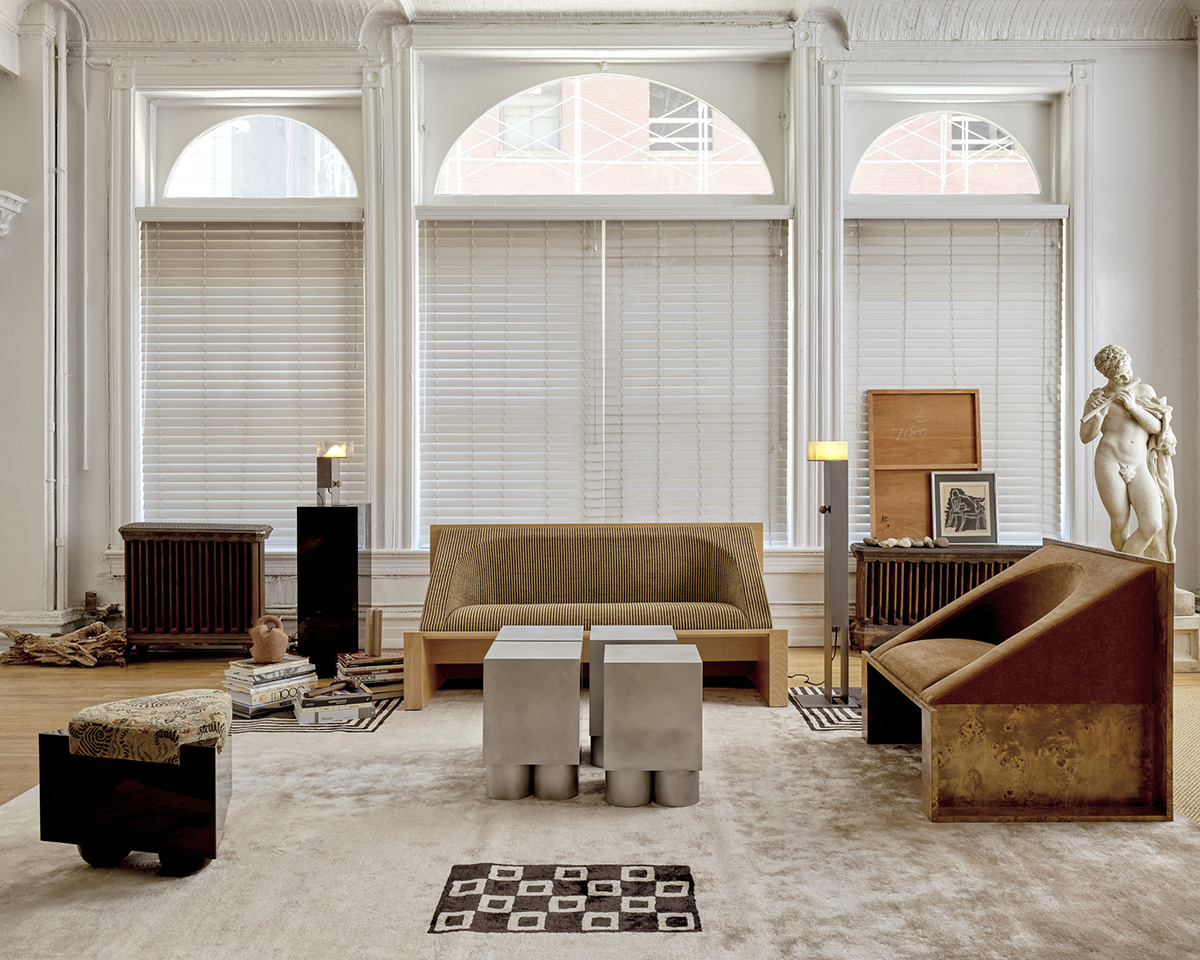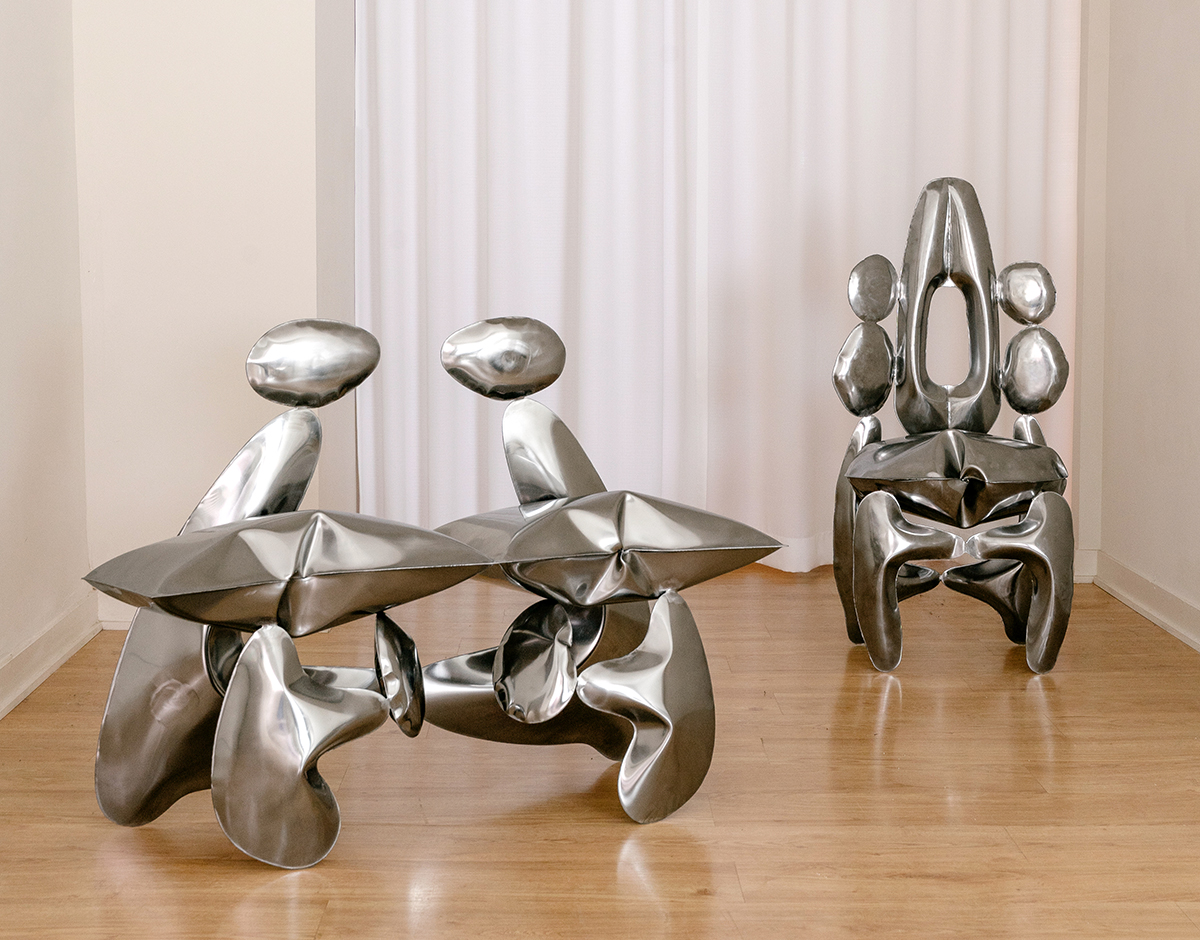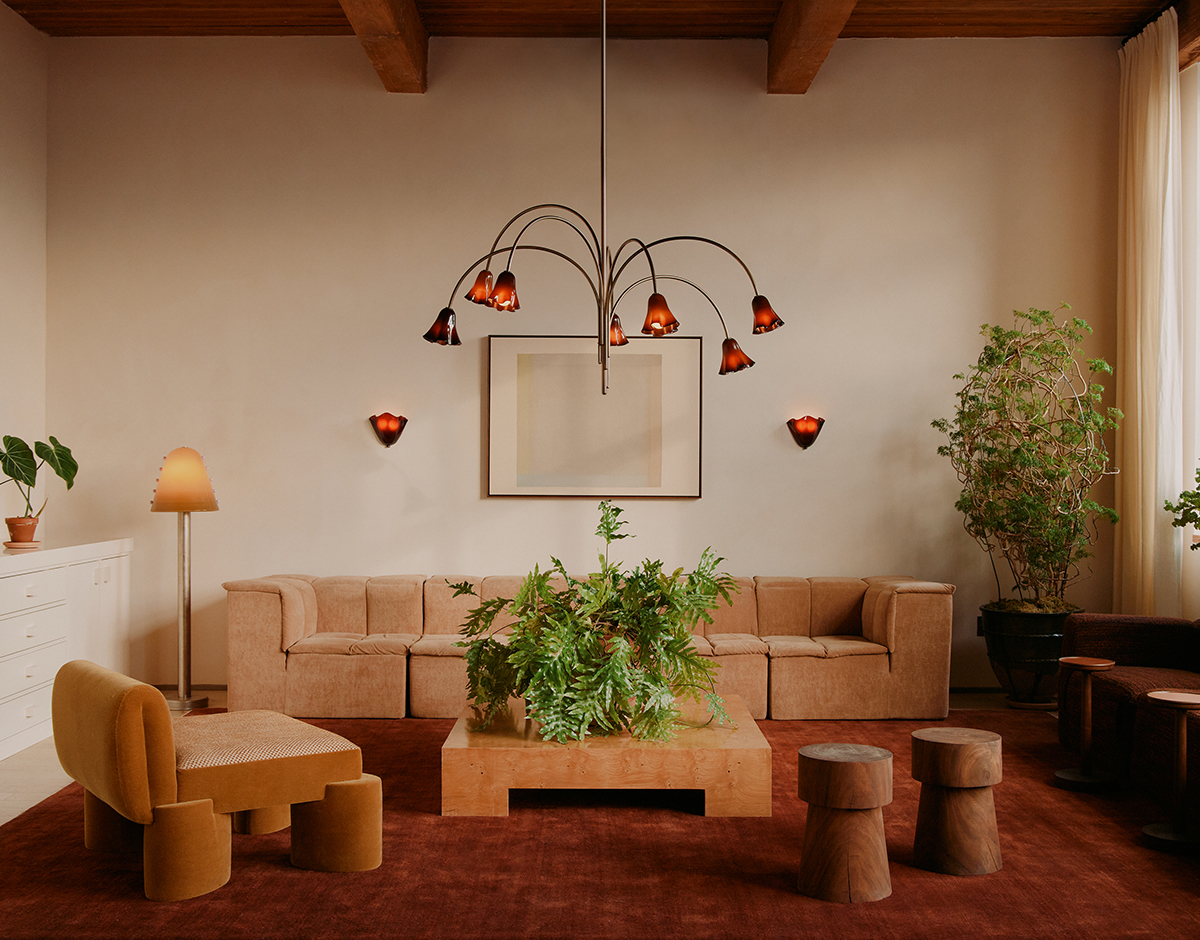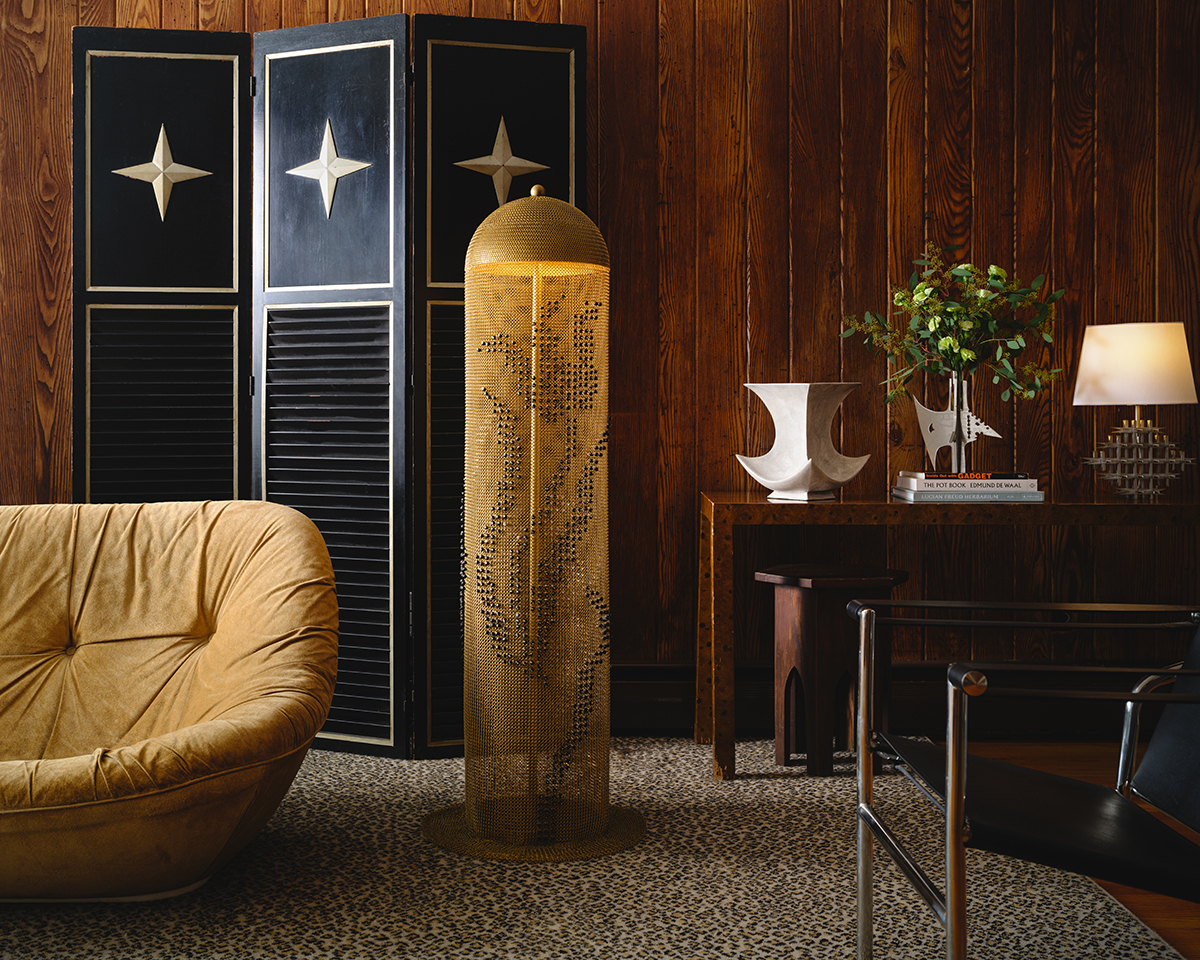
01.10.25
American Design Hot List
The 2024 American Design Hot List, Part V
This week we announced our 12th annual American Design Hot List, Sight Unseen’s editorial award for the names to know now in American design. We’re devoting an entire week to interviews with this year’s honorees — get to know the fifth group of Hot List designers here (including Wretched Flowers, whose chainmail floral floor lamp is the slightly goth hit of decor we never knew we needed.)
Samuel Aguirre

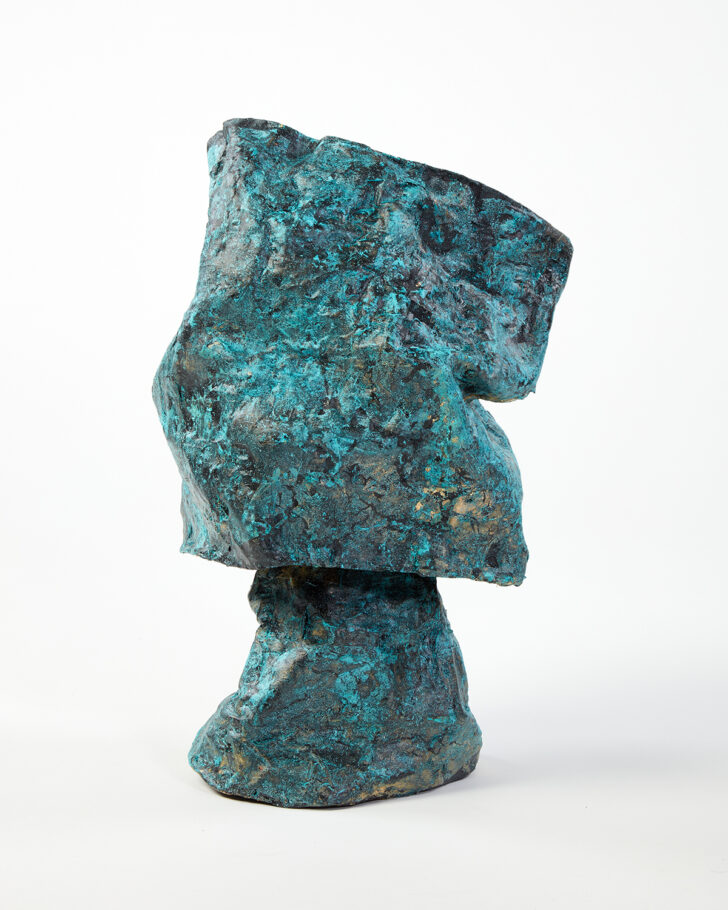
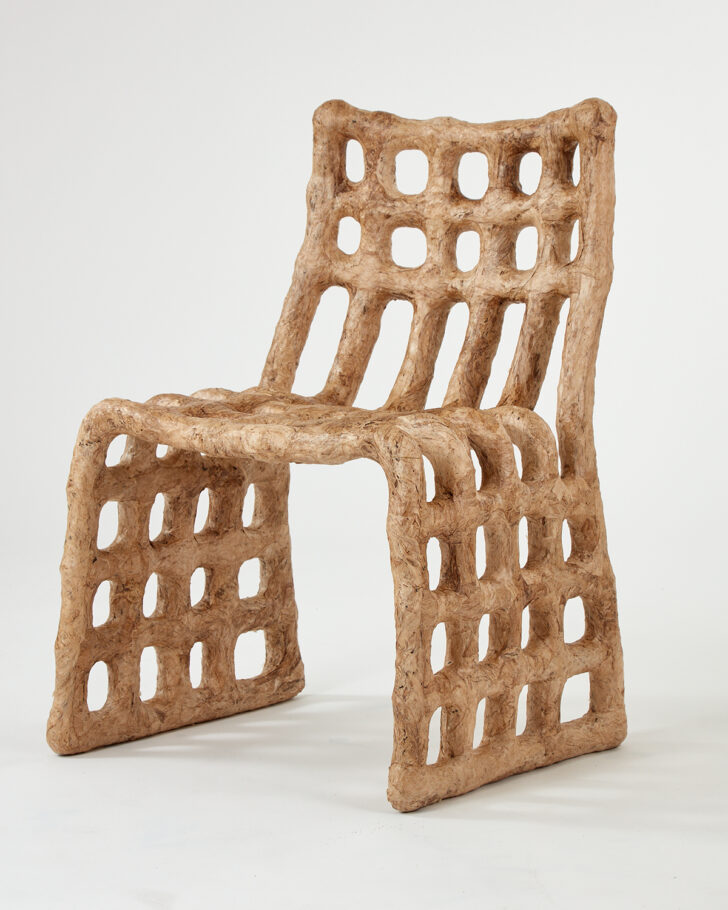
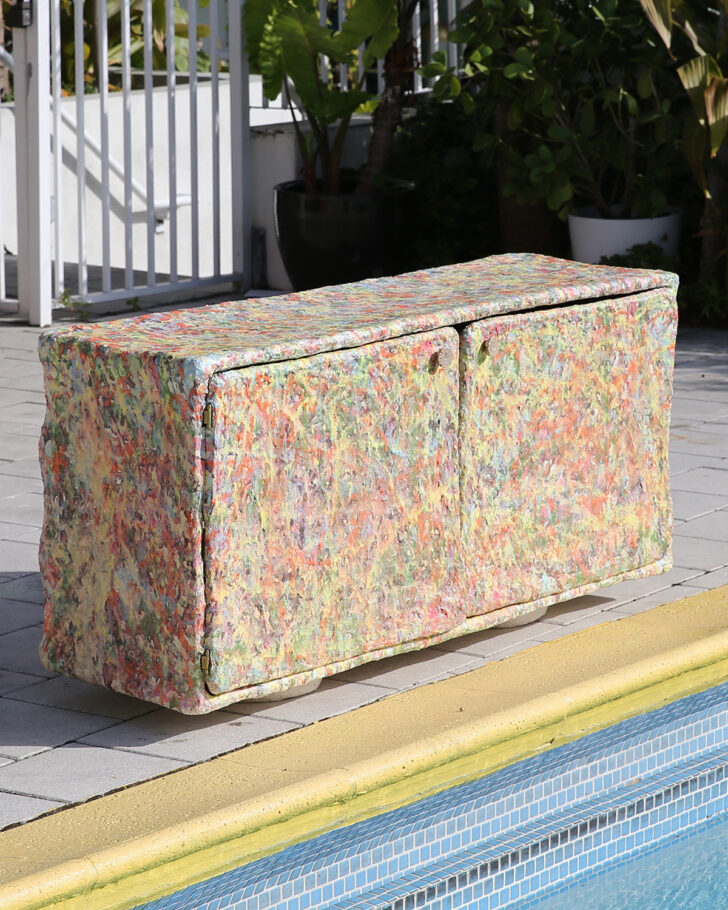
Providence, Rhode Island, samindaman.com
Samuel Aguirre worked in business development for more than a decade before his big lightbulb moment happened while making papier-mâché with his young son. One MFA in furniture design at RISD later, Aguirre is a star on the rise, and one of a new generation for whom it’s imperative to work within a circular system. Aguirre makes work using natural materials — paper pulp, mulberry fibers, muslin, cornstarch — that will last “as long as you’d like” and then compost at the end of their life. Drawing on pre-industrial processes — like weaving fiber into a grid and then pounding it with a stone to make paper — Aguirre nevertheless works within a wholly contemporary object vernacular: slumped lamps, crisp credenzas, and gridded seats, among them.
What is American design to you, and what excites you about it?
I am happy to say America is slowly moving on from the shades of grey, millennial design we’ve been spoon-fed for too long. There is a momentum behind people acting on their ideas and creating authentic objects, spaces, and communities. The result is a beautiful mash-up of DIYers, hobbyists, artists, craftspeople, and creatives from all walks of life exploring their own aesthetic. Much like the fabric of America, American Design is not just one thing. It’s less about “what is it?” and more about “why is it?” It feels inclusive, authentic, and uninhibited. To be fair, I don’t know what “it” is, but I think in a decade we will look back, identify the golden nuggets of the era and label the movement. Please check back in 10 years with a follow up.
What are your plans and highlights for the upcoming year?
I plan to…
Collaborate! Collaborating with other creatives has been a staple of my practice. There are a couple of collaborations in process and I hope some of that work will be ready for release late 2025.
Participate! I’ll spend the first half of 2025 in a business development program for early stage, design-driven studios, called DesignxRI (Design by Rhode Island) Spring Design Catalyst Program. Over the past year, I’ve had endless conversations with my maker community about the financial health of our studios. There is a genuine interest and need to create more public discourse about the business end of running a furniture studio, weathering the inevitable hurdles and navigating the sometimes broken distribution models we’ve inherited.
Create inventory! I’ll be stocking a collection of table lamps in standard finishes (Ahem… looking at you retailers…). In the interest of holding myself accountable I am using this moment to say inventory, photos, and spec sheets will be ready to go by May 2025. (I love a deadline.)
Share! I’ll be in the Lookbook section of ICFF Wanted Design with my friend Daniel Lefkowitz of 9&19 (@9and19). His work is drool worthy and there is a clear dialogue between our material and forms.
What inspires or informs your work in general?
INSPIRES
Right now I’m renovating an old home, which has been so fun and exhausting! Through the design-build process, I find myself designing more architectural elements than furniture. This home space has been a puzzle to solve and is having a clear influence on the application of my work. I’m excited to see how this will influence the direction of the studio work.
INFORMS
The experimental process is so integral to my creative process. Thinking is important. Writing is important. But nothing happens if I’m not doing. I am the type of person who does it wrong MANY times before getting it right. Which is okay because the right way tends to be hidden in the wrong way. It’s where the special “a-ha!” moments are found and eventually become foundational to a collection of work.
Shane Gabier
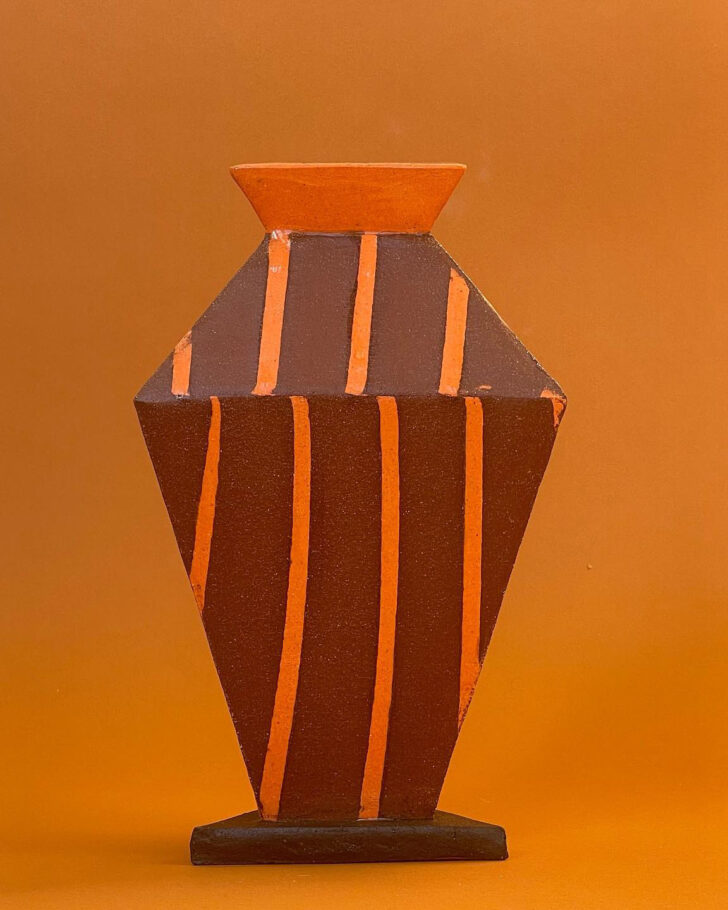
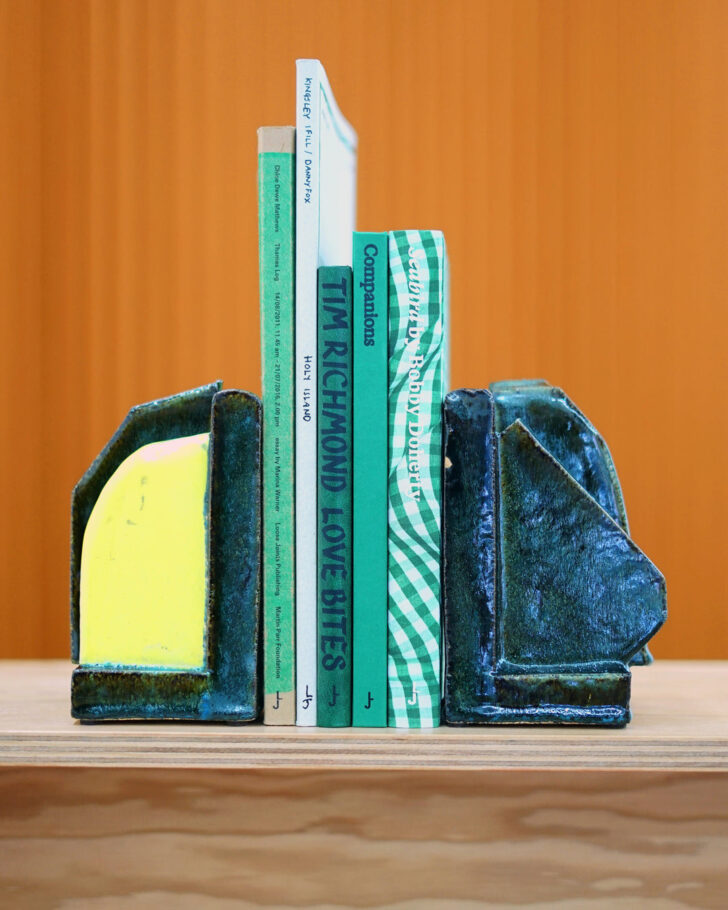
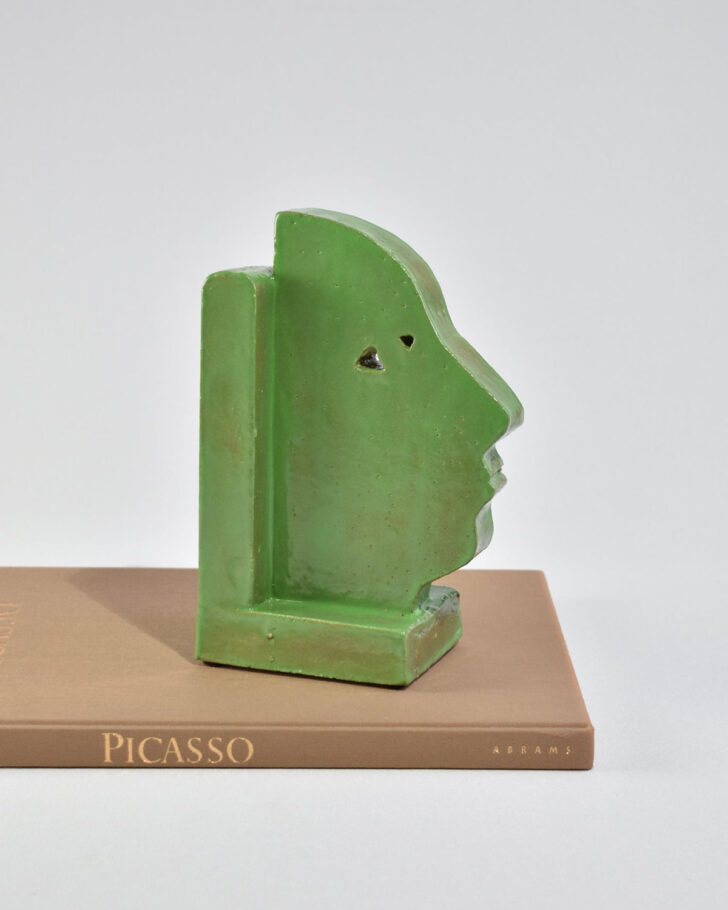
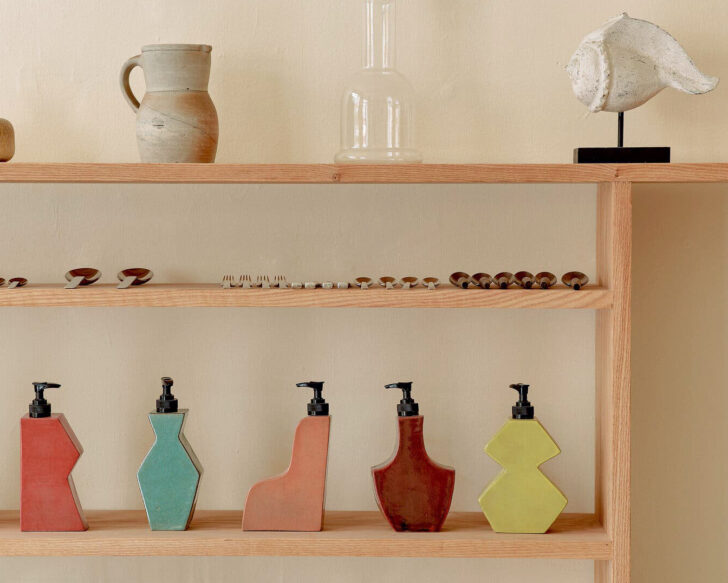
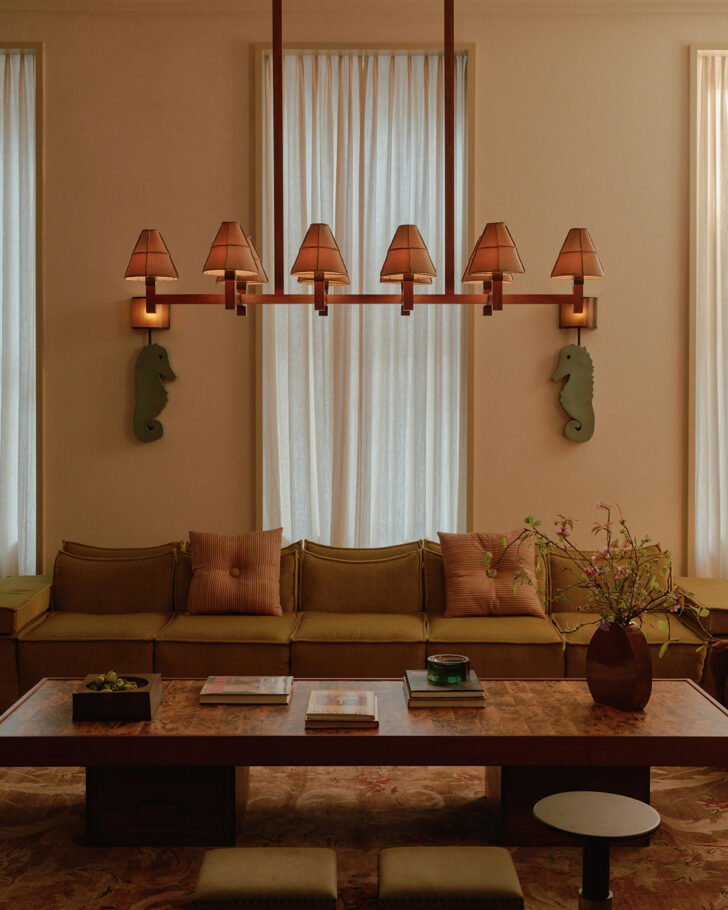
New York, @shanegabier
We were already fans of Shane Gabier’s gloriously hued, interestingly textured ceramics — see our profile of the former fashion designer back in 2022 — but this was the year his work seemed to pop up literally everywhere: tiny sculptures on the shelves at Beverly’s, figurative bookends at Casa Shop, geometric soap dispensers at Gem Home, seahorse-shaped sconces at Quarters, matcha bowls at CAP Beauty. Each piece, informed by things like Modernist design, ’70s psychedelia, and Brutalist architecture, was more covetable than the last.
What is American design to you, and what excites you about it?
I think that the idea of wide open possibility has always been the most exciting thing about American design — the opportunity to go deeply into one’s own world. Before making ceramic work, my background was in fashion. I think in American fashion, as with American design in general, there is a pragmatism that hopes to balance newness with functionality.
What are your plans and highlights for the upcoming year?
For the first few months of 2025, I am focusing on some new work, larger scale. 2024 was packed with back-to-back projects and really tight turnarounds, so I am going to slow things down a bit so I can do some deeper investigations into some ideas that I’ve only been able to touch upon. Ceramics is truly a medium of endless possibilities, and ideas generate more ideas, so to have the time and space to really dig into some of these feels really exciting and luxurious.
I’ve started to take on larger interior and tile projects, and I have a number of these to develop in 2025. For all of them, I’ve been given the creative freedom to explore totally new ideas. Tile is the perfect place to explore color, composition, dimensionality, and form, so I’m excited to see how these all unfold.
What inspires or informs your work in general?
The things that I’m interested in are the things I’ve always looked at and cared about. The more I research and develop, the more intersections and dynamic connections I find between all of these; there are always new ways of looking at the same things. Abstract expressionist painting from the ’50s and ’60s, Brutalist architecture, post-punk album covers, Memphis design, Japanese graphic design from the early ’80s, the intersection of art, folk craft, and design, and how all of these can be suggested, or alluded to, through clay. The objective is to take these points of reference and mix them into a recontextualized new form, to remove the work from time and place. I’m inspired by the idea of making work that feels simultaneously abstract, modern, and ancient.
Wretched Flowers
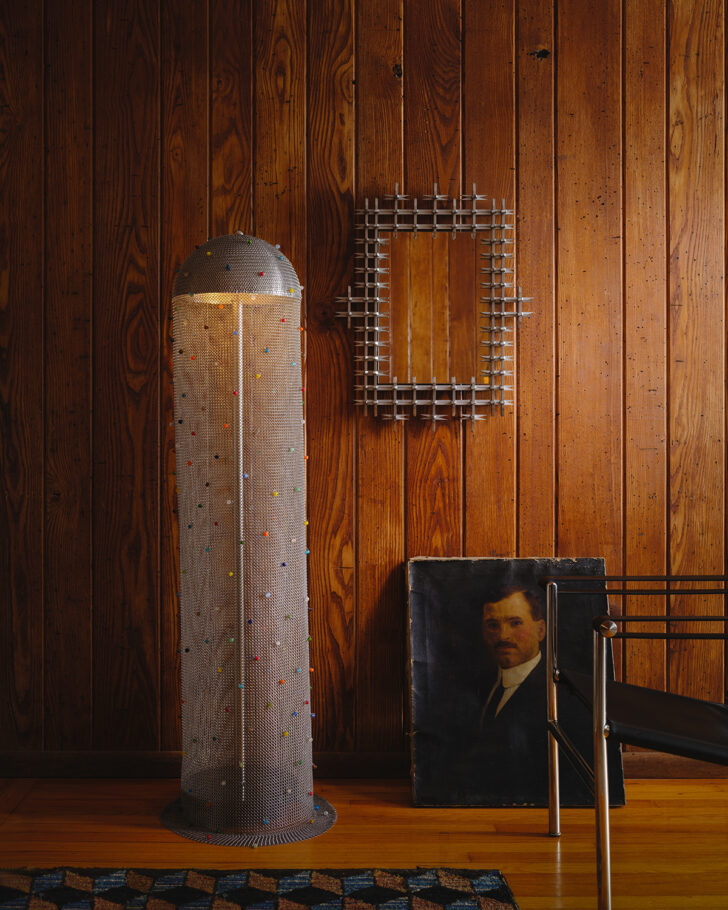
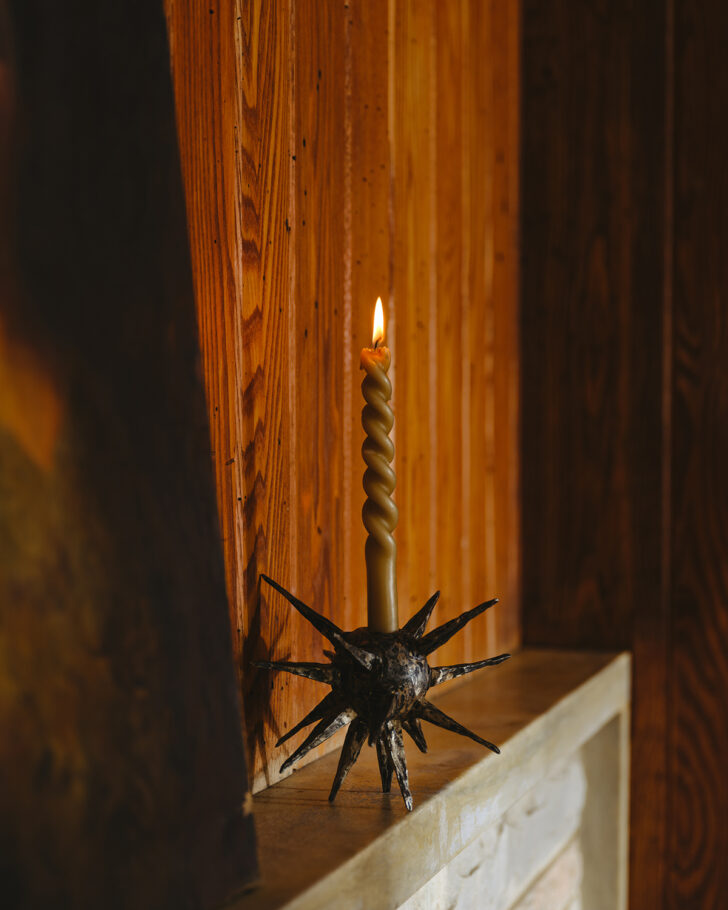

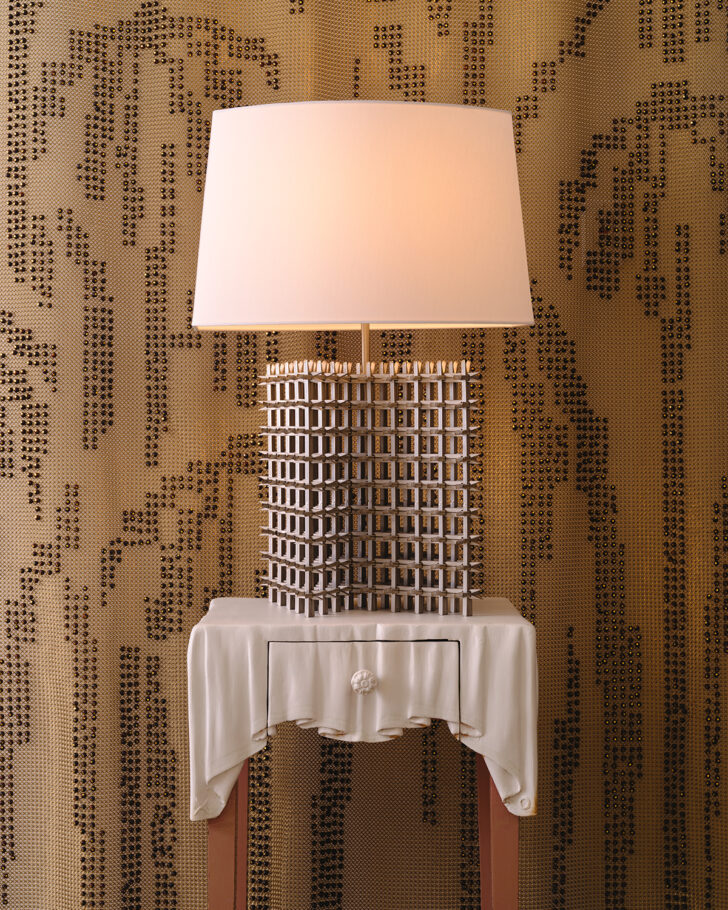
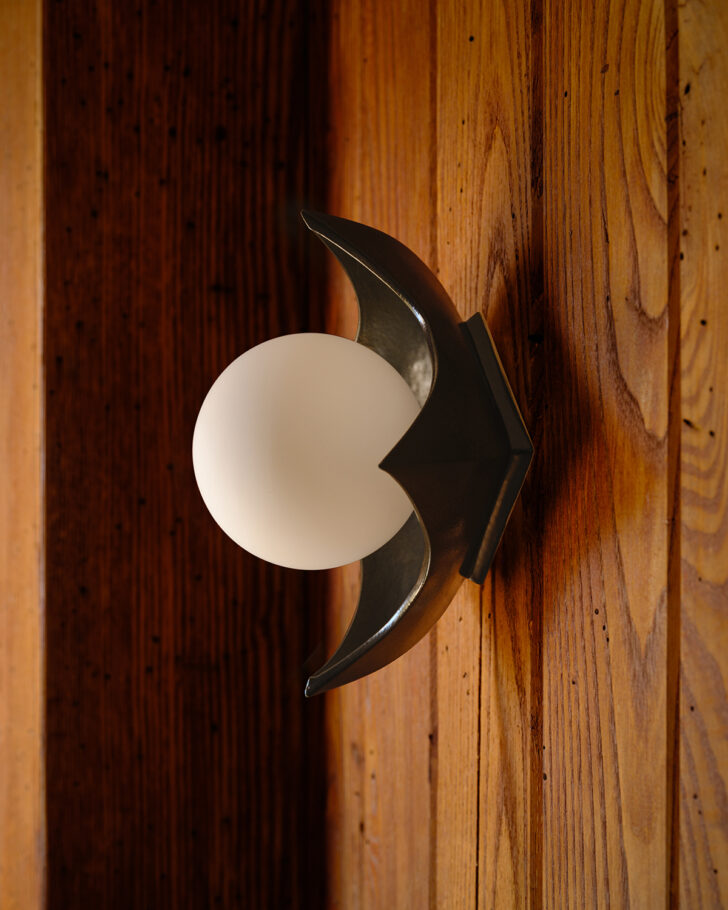
New Fairfield, Connecticut, wretchedflowers.com
Husband and wife duo Loney Abrams and Johnny Stanish collaborated for more than a decade before launching Wretched Flowers as a furniture studio this past May. Their gorgeously goth chainmail curtain, decorated in a delicate floral, studded with antique white jade beads, and on view at Jacqueline Sullivan Gallery last year, set our hearts aflame. One look at the rest of their work — the cascading metal mesh lampshades, the spiky wall-mounted sconces, the mirrors encircled by thorns — and we were hooked. Though often inspired by ancient craft, they’ve also birthed one of the more ingenious contemporary design hacks we’ve seen — on their site, as “Reched Flours,” they sell dupes of their own work, replicating their most popular pieces in black 3D-printed bioplastic rather than metal, selling them at a much more accessible price point, and, in effect, short-circuiting the whole knockoff system.
What is American design to you, and what excites you about it?
American design draws from such an incredible diversity of influences. The lack of a shared heritage allows for a freedom and range that’s really exciting. There’s no singular lineage or fixed aesthetic we’re bound to follow. Instead, we create meaning and context by pulling together references from disparate sources. And if the results are contradictory — well, that’s American design.
What are your plans and highlights for the upcoming year?
Right now we’re very focused on designing a new collection for 2025 and we’re still ironing out how and where we’ll exhibit it. Excited about the possibilities! And we’re decorating our new-ish house, where we’ll happily host new and old friends.
What inspires or informs your work in general?
The Arms and Armor collection at The Met. Tramp Art from the Great Depression. Textiles, specifically filet crochet. All of our pieces directly reference these influences, updating ancient artistry for contemporary living. Our chainmail pieces, for instance, were inspired by medieval helmets rimmed with hanging mesh, which we saw at The Met. Those forms evolved into our chainmail table and floor lamps — transforming symbols of violence into sources of light and warmth. We incorporate gemstone beads into our chainmail lighting and tapestries, arranging them in patterns sourced from historic weaving templates. Mixing chainmail with domestic textile references adds a feminine sweetness to an otherwise brutal and masculine material.
The same ethos applies to our “Crown of Thorns” series, named after a joinery technique from Tramp Art — a Depression-era folk art where traveling tradesmen repurposed discarded cigar boxes into intricate works. We’ve reimagined this lost craft using laser-cut stainless steel in place of wood. This mix of weapon-like steel and folksy Americana creates a contrast we’re continually drawn to.
Zach Besner
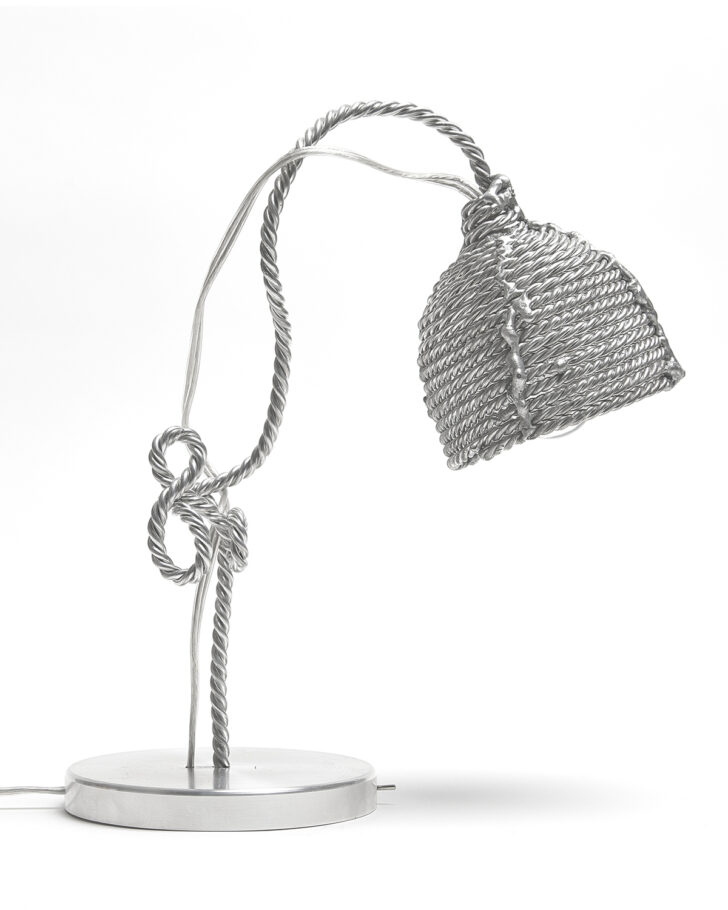
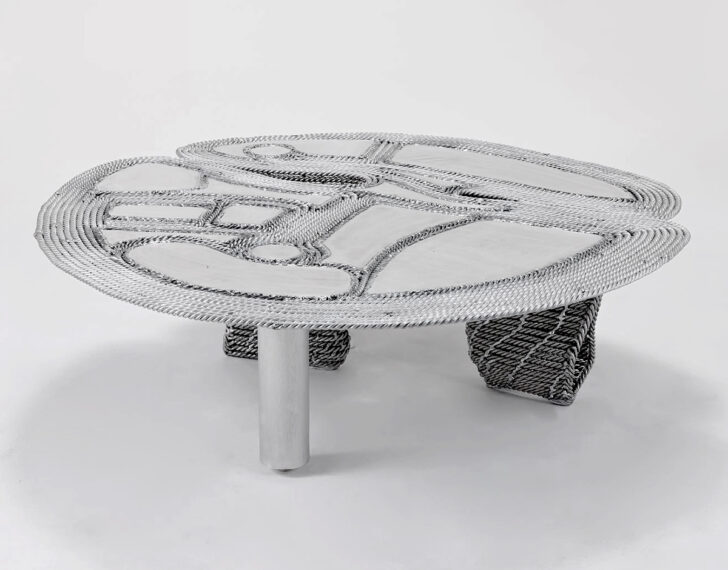
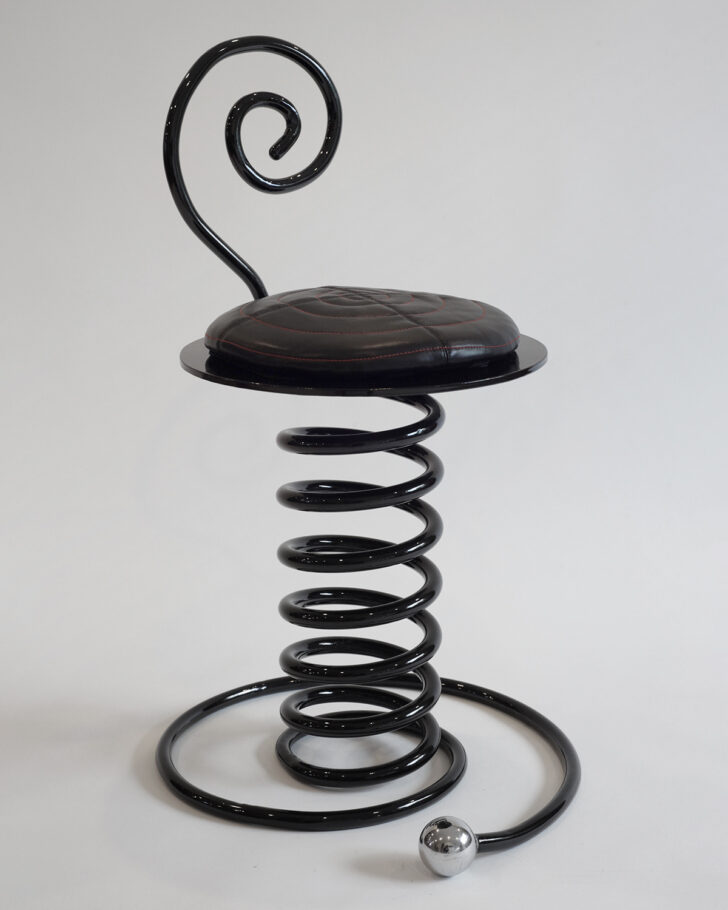
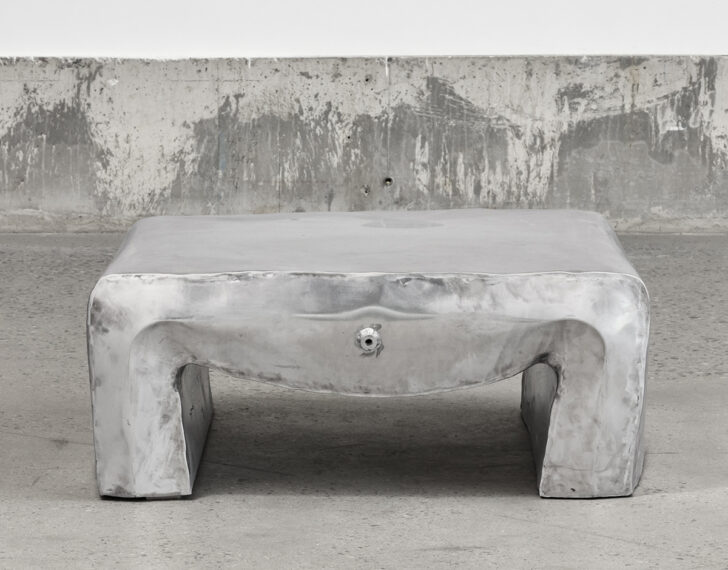
Catskills, New York, @za.chary
We know very little about Canadian-born, upstate New York–based designer Zach Besner, except that he shows with Carpenter’s Workshop Gallery, and we like the contrast between the puffed-up softness of his inflated-metal furniture and its raw, at times almost alien forms. He’s also doing interesting things with twisted ropes of metal, and if his practice still seems a little nascent, we’re hoping that in time, more will be revealed.
What is American design to you, and what excites you about it?
Thinking about the rural area I spend my time in, the universal influence has yet to really take over. With the globalization of trends afforded by the internet, things end up looking relatively similar. Here, though, design plays out in a time warp of sorts that I really enjoy. The vehicles people drive are older, their dress older, their hairstyles unaffected by time. The local vernacular is not aesthetically driven but follows a make-do sensibility and resilience. To me, these brutish, piecemeal constructions scattered around the mountains represent Americana ideals more than anything else. I appreciate the independent nature and resourcefulness of this way of being.
What are your plans and highlights for the upcoming year?
I’m working on a show with Jack Chiles slated for the springtime. I’m hoping to buy a small parcel of land and start plans for the construction of a living space.
What inspires or informs your work in general?
I’ve been spending a lot more time gardening the last few years. I can’t say there’s an immediate connection that leads anywhere in particular, but perhaps some of the construction or patterns that exist here are being turned up in small efforts in the work. Largely this space is to relax and provides a reminder to be patient and let things happen as they see fit.
I enjoy working with aluminum sheet as always. The rapid changes to the metal that happen by way of inflation are always fun, even if they happen unpredictably at times.
